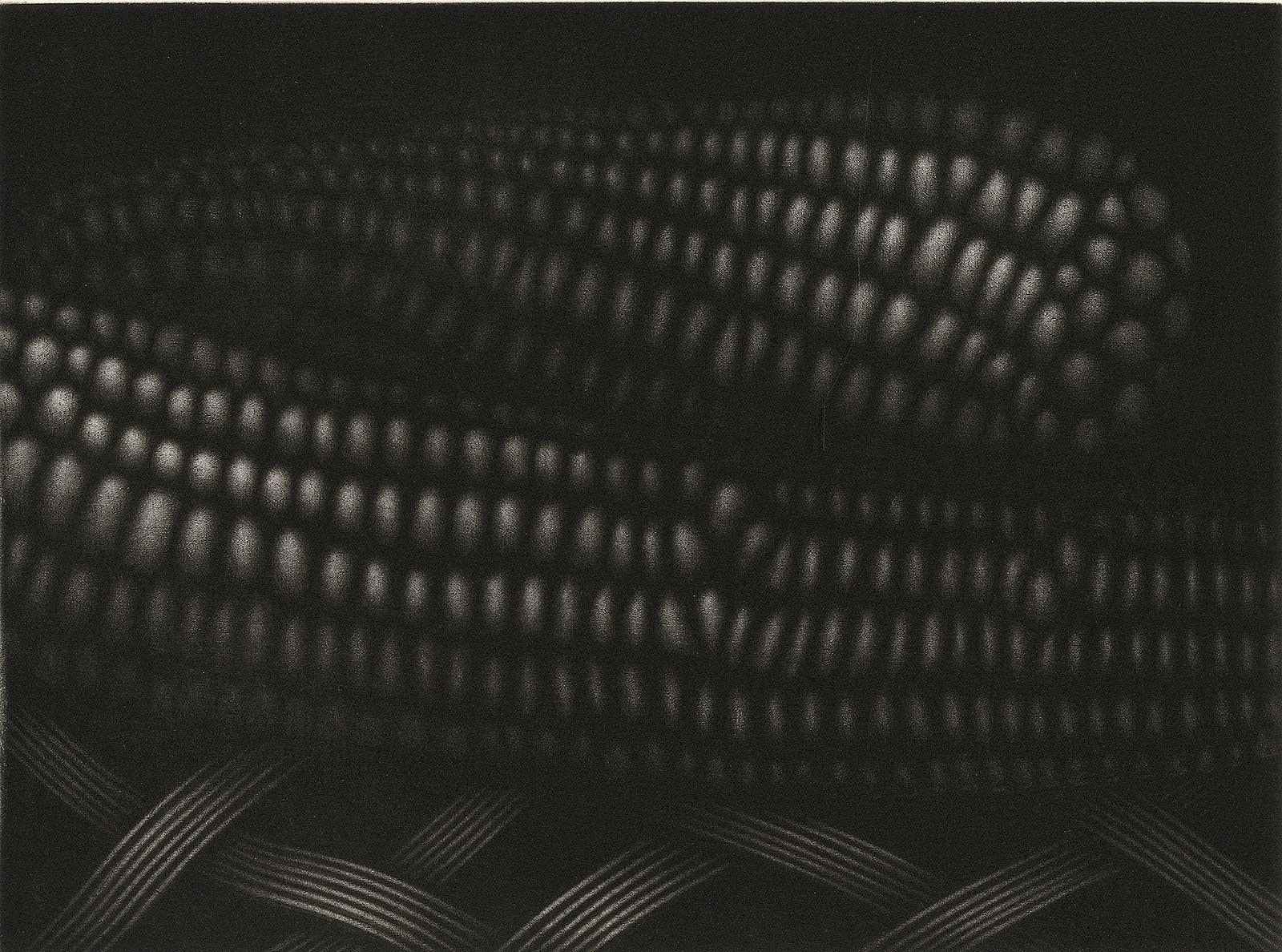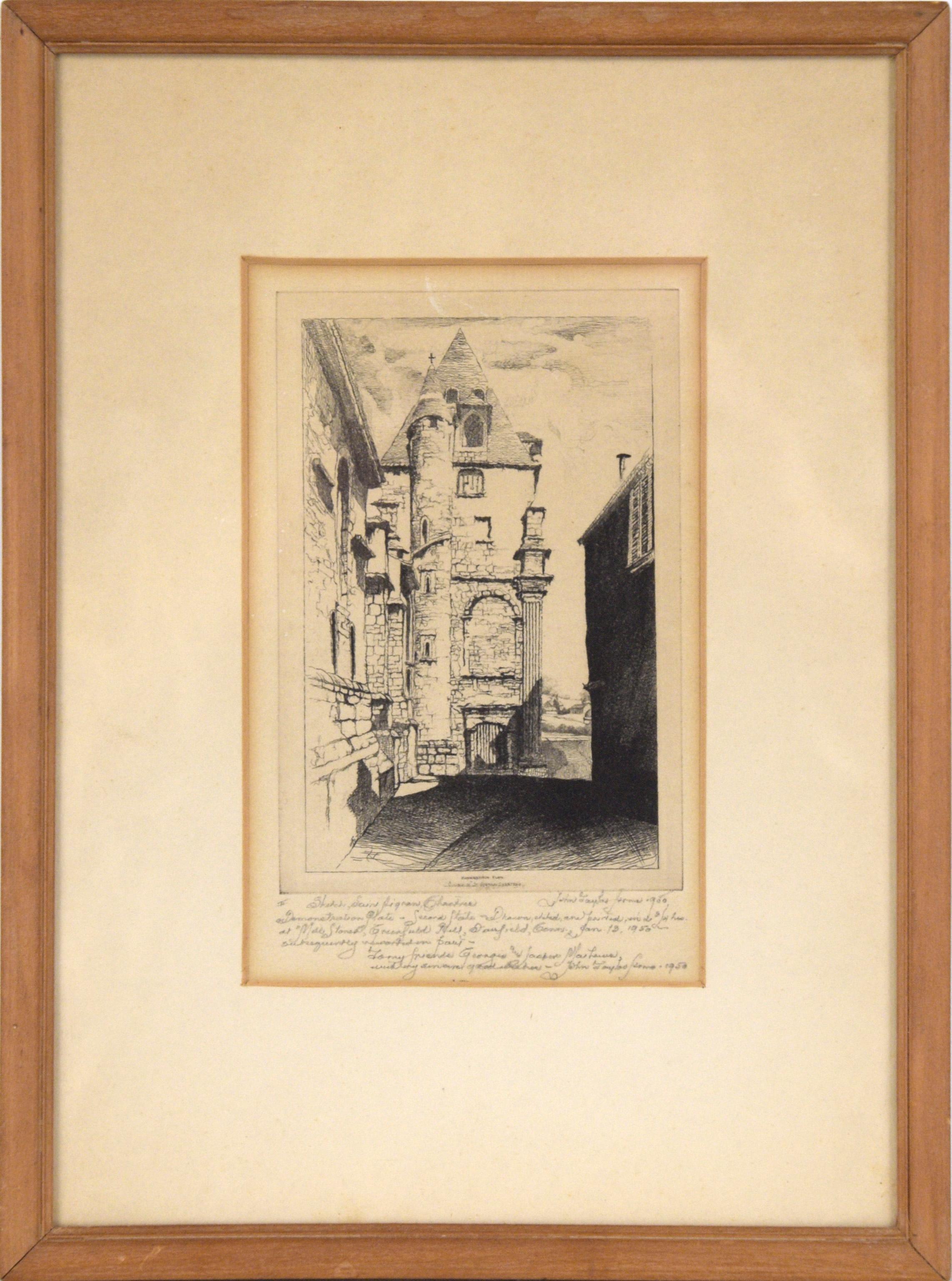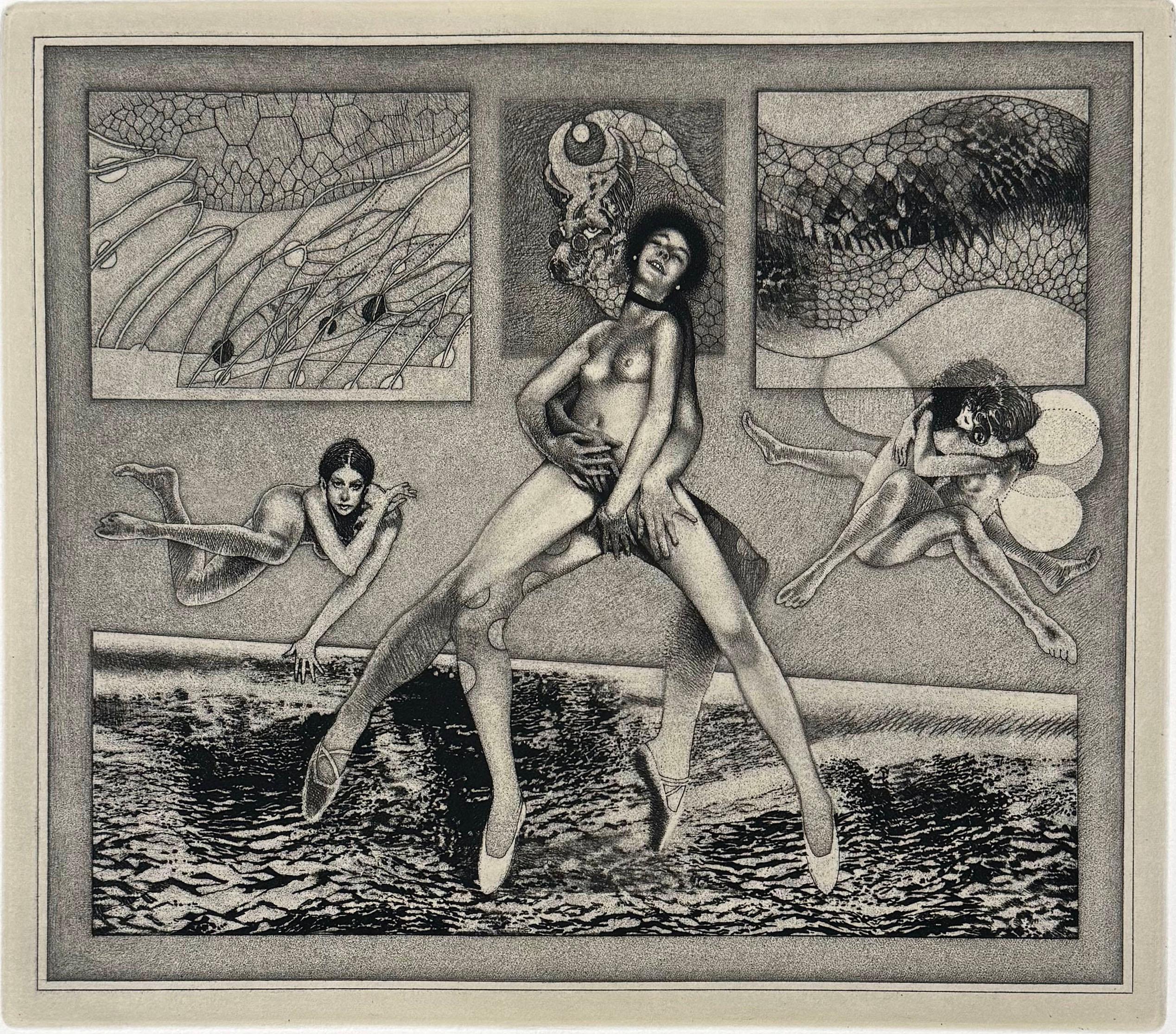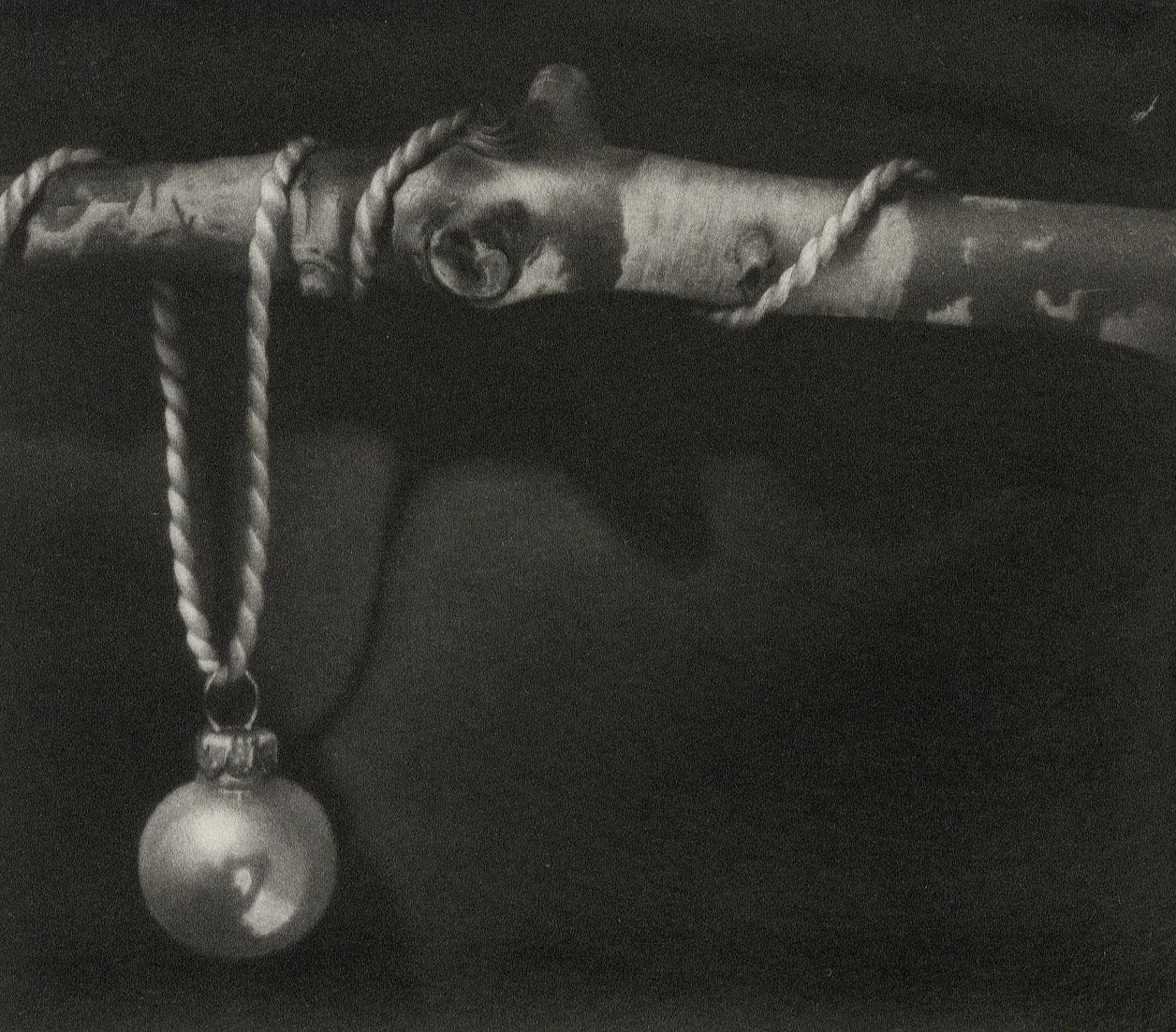Items Similar to Three 19th C. Engravings of Classical Italian Bronze Architectural Elements
Want more images or videos?
Request additional images or videos from the seller
1 of 20
UnknownThree 19th C. Engravings of Classical Italian Bronze Architectural Elements1889
1889
About the Item
A grouping of three engravings depicting classical Italian architectural features held in the National Museum of Naples, entitled "Bronze Hydria", "Marbre Naissance de Bacchus" and "Bronze Trepied Pour Sacrifice" from "Specimens from the Naples Museum : one hundred and sixty-eight plates, engraved on copper by the best Italian artists, illustrating four hundred and sixty-six objects from every branch of art and archaeology", published in Naples in 1889. These were created by artists F. Mori, P. Amendole and R. Radente.
"Marbre Naissance de Bacchus", Fig. 68: Top; The ancient Greek "Gaeta" Vase which depicts in bas-relief Mercury giving the infant Bacchus to the nymph Nisa. Bottom; A large vat adorned with bas-reliefs of Jupiter with his eagle, Hercules with his club, Mercury with his caduceus are visible and around other portions of the structure but not visible are Mars with a lance, Apollo with a lyre, Aesculapius with his staff and serpent and Bacchus with thyrsus and cantharus.
"Bronze Trepied Pour Sacrifice", Fig. 120 A beautiful tripod with three lion-footed legs capped by a seated sphinx and adorned with decorative arabesques and bearded heads of Jupiter Ammon. The legs are braced by elegant sprays of lotus and a lotus bud. The tripod is also called the Tripod of Isis and was meant for the worship of the Egyptian god Isis. It was found in a private house in Herculaneum.
"Bronze Hydria", Fig. 144 A pail richly embossed and inlaid in silver. The handles are hinged and form a rim to the pail when they are in the down position. One of the handles has the inscription " Corneliae S. Chelidonis".
The prints are presented in identical gold-colored wood frames with decorative textured gold-colored mats and gold fillets. Each frame measures 14.75" x 12.5" x 2".
- Creation Year:1889
- Dimensions:Height: 14.75 in (37.47 cm)Width: 12.5 in (31.75 cm)Depth: 2 in (5.08 cm)
- Medium:
- Period:
- Condition:
- Gallery Location:Alamo, CA
- Reference Number:
About the Seller
5.0
Vetted Seller
These experienced sellers undergo a comprehensive evaluation by our team of in-house experts.
Established in 2011
1stDibs seller since 2019
242 sales on 1stDibs
Typical response time: 1 hour
- ShippingRetrieving quote...Ships From: Alamo, CA
- Return PolicyA return for this item may be initiated within 7 days of delivery.
More From This SellerView All
- Richard Reynolds, Society of Friends: 19th C. Engraved Portrait by Wm. SharpBy William SharpLocated in Alamo, CAThis is an early 19th century engraved portrait of the industrialist and philanthropist Richard Reynolds by William Sharp after William Hobday. It was published in London by Rudolph Ackerman in 1817. The print is entitled "Richard Reynolds of the Society of Friends, Late of Bristol". This three-quarter length portrait of Reynolds depicts him seated, directed to right, looking towards the viewer. He is holding an open book, wearing a plain suit. A curtain in the background is pulled to the left, revealing bookshelves. Some of the books are labelled 'Addison & Watts' 'Kempis & Fenelon' 'Milton & Cowley' etc. The inscription above the portrait reads: "When the eye saw him it blessed him". The lettering below the image reads: "Richard Reynolds of the Society of Friends, Late of Bristol; Whose Life and Fortune were devoted to the Glory of God by relieving the humble in Distress.', This plate is dedicated by Permission to his Royal Highness, the Prince Regent by his most devoted very humble servant William Hobday." This engraving is printed on thick paper. The sheet measures 16" high and 12" wide. It is adhered to an archival backing in the upper left corner. There is mild discoloration and toning in the margins, but it does not involve the image. Richard Reynolds (1735-1816) was a prominent member of the Society of Friends, also known as Quakers, in the 18th and 19th centuries. He was born into a wealthy family in Bristol, England, and inherited a successful copper smelting, iron manufacturing business from his father. Despite his privileged upbringing, Reynolds was known for his deep concern for the poor and his commitment to social justice. He used his wealth and influence to support a range of philanthropic causes, including the abolition of slavery, the improvement of working conditions for miners and factory workers, and the provision of education for the poor. Reynolds was also a prominent supporter of the Quaker...Category
Early 19th Century Portrait Prints
MaterialsEngraving
- Portrait of William Pitt, Earl of Chatham: Rare Framed Mezzotint after BromptonBy Edward FisherLocated in Alamo, CAThis is a large framed very rare hand-colored copperplate mezzotint engraved portrait of William Pitt, the Elder, 1st Earl of Chatham by Edward Fisher, published in London in 1779 after a painting by Richard Brompton. Pitt is depicted attired in a flowing regal appearing cape, standing in an ornate room with his left hand outstretched over a serious of manuscripts and scrolls that are laying on a table or desk to his left. The table is covered by a beautiful oriental carpet. The manuscripts include the Magna Carta, a map of the colonies, including Long Island and Staten Island, and papers entitled "A Plan for the Reconciliation between Great Britain and the Colonies", "A Motion Made in 1775 for the Recall of Troops from Boston", "A Provisional Act for Settling the Troubles in America Offered to the House of Lords in 1775", and "It is doing Nothing to repeal a few Scraps of Paper or Pieces of Parchment called Acts of Parliament. But our Business is to repeal the Ill-Will and the Animosity unfortunately now subsisting between Great Britain and North America". This engraving is held by the British Museum and the British Royal Collection Trust. This large framed mezzotint engraving is presented in a brown wood frame with gold-colored beaded inner and outer trim, and a cream-colored French mat. The frame measures 31.63" high by 26.63" wide by 0.75" deep. There are three short tears along the right edge and mild creasing in the left upper, left lower and right lower corners. It is otherwise in very good condition. William Pitt (1708-1778) was a member of the British parliament from 1735 to 1761 and prime minister from 1766 to 1768. Pitt was an advocate for the American colonies leading up to the War of Independence. He called for an amiable relationship between Great Britain and the colonies and opposed the Stamp Act and military action in America. He advocated for a withdrawal of English troops from Boston in 1775 and the settling of troubles in America, as two of his manuscripts on the table outline. Pitt's colleague, Lord Shelburne (later the Marquess of Lansdowne) shared his sympathies and after Pitt's death, signed a peace treaty with the United States in 1782. The American city of Pittsburgh, Pennsylvania is named for William Pitt, the Elder. The name originated when the conflict between the British and French over territorial claims in the Northeast were settled in 1758. General John Forbes and his British army, supported by the American colonial troops, expelled the French from Fort Duquesne (which had been constructed by the French in 1754). Forbes re-named the site for William Pitt the Elder, who at the time was a British statesman. The earliest known reference to the new name, Pittsburgh, is in a letter sent from General John Forbes to Pitt, dated November 27, 1758. Pitt's son, William Pitt, the Younger, like his father, also served as British Prime Minister. Edward Fisher (1730-1785) was born in Ireland in 1730. He was originally a hatter, but learned engraving in London. He became a member of the Incorporated Society of Artists in 1766, and exhibited there fourteen times between 1761 and 1776. He engraved more than sixty portraits. In addition to this portrait of William Pitt, Earl of Chatham, after Richard Brompton he engraved several portraits after Brompton, including George, Earl of Albemarle, as well as engraved portraits after paintings by Joshua Reynolds, including the Shakespearean actor David Garrick, Hugh, Earl of Northumberland, and Elizabeth, Countess of Northumberland and Laurence Sterne, and Hope Nursing Love, as well as Robert Brown, after Mason Chamberlin, Colley Cibber, after Jean-Baptiste van Loo, Christian VII of Denmark, after Nathaniel Dance, Simon, Earl Harcourt, after Hunter, Roger Long, after Benjamin Wilson...Category
Late 18th Century Old Masters Portrait Prints
MaterialsMezzotint
- The Heidelberg Tun: A Framed 17th Century Engraving of a Huge Wine CaskLocated in Alamo, CA"The Heidelberg Tun" is a 17th century engraving by an unknown artist. It depicts a famous huge ornamental wine cask that resided in the wine cellar of Heidelberg Castle. The cask shown here, built in 1664, is the second of four Heidelberg Tuns; the first was destroyed during the Thirty Years' War, between 1618 and 1648. This cask was built in 1664 when Karl Ludwig ordered Heidelberg cellar master...Category
Late 17th Century Old Masters Interior Prints
MaterialsEngraving
- "Inside of a House in Nootka Sound" (Canada) from Captain Cook's 3rd VoyageBy John WebberLocated in Alamo, CA"The Inside of a House in Nootka Sound" is an engraving created by William Sharp (1749-1824), from a drawing by John Webber (1752-1793), who was the artist on Captain James Cook's 3rd and final voyage of discovery. It is Plate 65 in "A Voyage to the Pacific Ocean Undertaken by the Command of His Majesty, for Making Discoveries in the Northern Hemisphere", the official British Admirality sanctioned journal published upon completion of the voyage in London in 1784 by Strahan & Cadell. This engraving is presented in a Koa wood frame and a white mat. There are occasional tiny faint spots, but the print is otherwise in very good condition. Koa wood is legendary in Hawaii. Not only is this amazing wood native to Hawaii, but it is known for the deep rich colors and varied grain pattern. Koa has an honored heritage in Hawaii and is highly revered and sacred. The word “koa” means “warrior” in Hawaiian. The warriors of King Kamehameha the Great, created canoes and weapons from a wood plentiful on the Big Island of Hawaii. This wood became synonymous with the warriors themselves, and it became known as koa. There are three other engravings listed form the official journal of Captain Cook's 3rd voyage available that are presented in identical Koa wood frames and mats. They would make a wonderful grouping for a display of 2, 3 or 4 prints. Please see listings: LU117324682432, LU117324684022, LU117324684062. A discount is available for a grouping depending on the number of items included. Nootka Sound is on the west coast of Vancouver Island, British Columbia, Canada. It was explored by Captain Cook in 1778 after he discovered Hawaii during his 3rd voyage. He originally named it King George's Sound, but did record Nootka Sound, which he thought was its native name. Hawaii was originally called The Sandwich Islands in honor of The Earl of...Category
1780s Realist Interior Prints
MaterialsEngraving
- Tomb of the Virgin Mary: An Early 19th C. Aquatint after a Luigi Mayer DrawingBy Luigi MayerLocated in Alamo, CA"Tomb of the Virgin Mary", Pl. 10 in Luigi Mayer's publication 'Views in Egypt, Palestine, and Other Parts of the Ottoman Empire', published by Robert Bowy...Category
Early 19th Century Interior Prints
MaterialsEngraving
- Elizabeth, Countess of Northumberland: Mezzotint After a Painting by J. ReynoldsBy Joshua ReynoldsLocated in Alamo, CAThis is an 18th century mezzotint portrait of Elizabeth, Countess of Northumberland, Baroness Percy by Richard Houston after a painting by Joshua Reynolds, published in London by Robert Sayer in 1763. It is a rare, full length portrait of Elizabeth, who was known as Lady Betty. Lady Betty stands, facing to the right, holding her coronet, and wearing her peeress’s ermine and velvet robes over a brocade dress. In the background are a column, a billowing drape, and the grounds of Alnwick Castle...Category
Mid-18th Century Portrait Prints
MaterialsMezzotint
You May Also Like
- Le Mais (Corn on the cob) in woven basket)By Laurent SchkolnykLocated in New Orleans, LAMaize by Scholnyk is a mezzotint of ears of corn in a woven basket. This impression is #25 of an edition of 80. Schkolnyk was born in Paris, France in 1953 and currently resides in...Category
1890s American Modern Still-life Prints
MaterialsMezzotint
- "Church of St. Aignan Chartres" Etching in Ink on Paper (Demonstration Plate)By John Taylor ArmsLocated in Soquel, CA"Church of St. Aignan Chartres" Etching in Ink on Paper (Demonstration Plate) Delicate and detailed drypoint etching of the Church of St. Aignan in Chartres, France by John Taylor Arms (American, 1887-1953). The viewer stands in an alley near the church, looking out of the shadows at the sunlit towers. The architectural details of the church are well-captured, including the texture of the stone walls, the roof, and ornamental detail. Titled, signed, dated, and inscribed along the bottom edge: Sketch, Saint Aignon, Chartres John Taylor Arms 1950 The inscription includes details about production, as well as a dedication "To my friends Georgia and Jasper Mathews, with my sincerest good wishes" Presented in a wood frame with an off-white mat. Frame size: 12.5"H x 9.25"W Image size: 7"H x 4.5"W John Taylor Arms was born in Washington, DC in 1887. He studied law at Princeton University, transferring to the Massachusetts Institute of Technology, Boston, to study architecture, graduating in 1912. After serving as an officer in the United States Navy during World War I, he devoted himself full-time to etching. He published his first original etchings in 1919. His initial subject was the Brooklyn Bridge in New York City near which he worked. Arms developed a successful career as a graphic artist in the 1920s and 1930s, specializing in series of etchings of Gothic churches and cathedrals in France and Italy. In addition to medieval subjects, Arms made a series of prints of American cities. He used sewing needles and magnifying glasses to get a fine level of detail. A member of many printmaking societies, Arms served as president of the Society of American Graphic Artists. An educator, Arms wrote the Handbook of Print Making and Print Makers (1934) and did numerous demonstrations and lectures. Arms was elected into the National Academy of Design as an Associate member in 1930, and became a full member in 1933. His work was also part of the painting event in the art competition at the 1932 Summer Olympics...Category
1940s Victorian Still-life Prints
MaterialsInk, Etching, Drypoint, Paper
- Europa, by Peter MiltonBy Peter MiltonLocated in Palm Springs, CAResist Ground Etching and Engraving from a Copper Plate on BFK Rives, Somerset Buff, Wove Paper Medium: Resist Ground Etching & Engraving Edition of 125 Year: 1982 One o...Category
1980s Contemporary Interior Prints
MaterialsEtching, Engraving
- "Dark Box" Drypoint Etching with Aquatint (no. 10/20)Located in Soquel, CAFinely balanced etching by Benjamin Vasserman (Estonian, b 1949). A squash sits atop a small black box with a latch. There is a drapery behind the squa...Category
1980s Modern Interior Prints
MaterialsInk, Aquatint, Drypoint, Paper
- Bambalina (Are ornaments, decorations mere backdrop for true Christmas story)By Francisco SoutoLocated in New Orleans, LASouto named this image Bambalina (backstage). It is an exclusive publication of Stone and Press Gallery. Francisco Souto was born in Venezuela. He received a BFA from Herron Schoo...Category
21st Century and Contemporary American Modern Still-life Prints
MaterialsMezzotint
- "Still Life with Door", Monochrome Cyan Drypoint EtchingBy Barbara B. CohnLocated in Soquel, CALimited edition monochrome cyan drypoint etching of a potted plant and door by Barbara Cohn (American, 1923-2019). Numbered ("2/25"), titled ("Still Life with Door"), and hand signed...Category
1980s American Realist Still-life Prints
MaterialsPaper, Ink, Drypoint
Recently Viewed
View AllMore Ways To Browse
Used Architectural Elements
Bronze Architecture
Antique Architectural Elements
Architectural Antiques
Antique Gold Engraving
Italian Wood Architectural Elements
Italian Architectural Antiques
19th Architecture Engraving
Italian Bronze Head
Lion Footed
Antique Copper Still
Bronze Head Classical
Italian Fig
Antique Architectural Lion
Architecture Bas Relief
Egypt Relief
Egyptian Relief
Copper Engravings Italy





